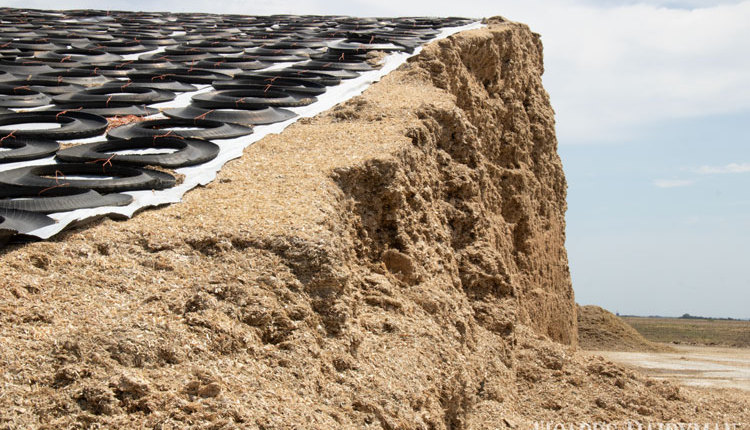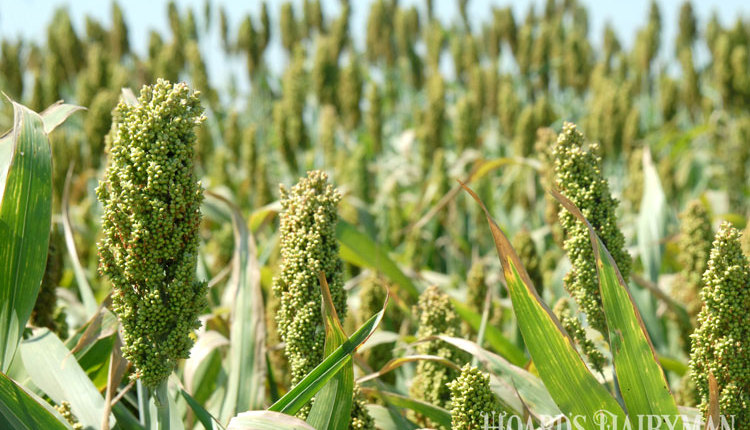Corn production is forecast at a record high 13.4 billion bushels, up 2 percent from the previous record set in 2009, according to USDA's Crop Production report issued yesterday. Based on conditions as of August 1, yields are expected to average a record-high 165.0 bushels per acre, up 0.3 bushel from last year's record of 164.7.
Forecasted corn yields are higher than last year across the upper Mississippi Valley and upper Great Lakes region where moderate temperatures and adequate soil moisture provided favorable growing conditions. Expected yields also were higher compared with last year across the southern Great Plains and lower Mississippi Valley. Yield prospects are lower in both the Atlantic Coast region and Tennessee Valley due to above normal temperatures and dry conditions.
Soybean production is forecast at a record high 3.43 billion bushels, also up 2 percent from last year. Based on August 1 conditions, yields are expected to average 44.0 bushels per acre, unchanged from last year's record high yield.
Compared with last year, bean yields are forecast higher across the northern-tier states, with gains of 4 bushels or more in Minnesota, North Dakota, Pennsylvania, and Wisconsin. The largest boost in yield from 2009 is expected in Texas, where the yield is forecast to be up 9 bushels from last year. In addition, higher yields are expected in the Delta States. With the exceptions of Illinois and South Carolina, yields are forecast down or unchanged across the central part of the soybean growing region, extending from the central Great Plains to the East Coast and down into the Southeast. The Mid-Atlantic States are expecting the largest declines from last year, as Delaware, Maryland, and Virginia are all expecting yields to be down more than 10 bushels from 2009 due to very hot and dry weather this summer. If realized, the forecasted yield in New York will be a record high and the forecasted yield in Arkansas will tie the previous record high. Area for harvest in the United States is forecast at 78.0 million acres, unchanged from June but up 2 percent from 2009.
As of August 1, 72.455 million tons of alfalfa and alfalfa mixtures had been harvested. That compares with 71.03 million tons a year ago, a 2 percent rise. Alfalfa and alfalfa mixtures yielded 3.49 tons per acre so far this year compared to 3.35 ton in 2009. Acreage this year was 20.732 million acres compared to 21.227 last year.
While record corn and bean crops are projected, demand is expected to be up, as well. Beginning stocks for corn are projected 52 million bushels lower reflecting higher expected exports, corn use for sweeteners and starch, and a small reduction in projected imports for 2009/10.
Domestic corn use for 2010/11 is raised 30 million bushels reflecting higher expected corn use for sweeteners and starch. Exports are projected 100 million bushels higher as tighter foreign supplies of wheat and coarse grains raise prospects for U.S. corn shipments. Despite higher production, ending stocks are projected down 61 million bushels at 1.3 billion, the lowest in 4 years. The season-average farm price is raised 5 cents on each end of the range to $3.50 to $4.10 per bushel.
Projected soybean exports are raised 65 million bushels to 1.435 billion. The sharp increase in exports reflects strong export sales, especially to China, stronger projected import demand for China, and reduced soybean stocks in South America at the beginning of the 2010/11 marketing year. China soybean imports are raised to 49.5 and 52 million tons, respectively for 2009/10 and 2010/11. Soybean crush is raised 5 million bushels to 1.65 billion reflecting a small increase in domestic soybean meal demand. Soybean ending stocks are projected at 360 million bushels, unchanged from July.
Soybean and product prices all increased this month. The U.S. season-average soybean price for 2010/11 is projected at $8.50 to $10.00, up 40 cents on both ends of the range. Soybean meal prices are projected at $250 to $290 per short ton, up $10.00 on both ends of the range.











